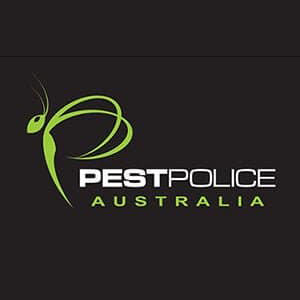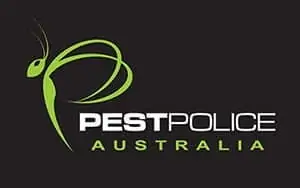Cleaning and disinfecting the house is integral to property maintenance. More importantly, these two helps to keep the home free of pests. Because your family’s health and your property’s integrity is at stake, cleaning and disinfecting has to be done properly. Doing so ultimately contributes to the goal of keeping the home safe.
There are many different ways to clean and disinfect the home. You can use a vacuum cleaner, a mop, or a broom but even these won’t suffice in eradicating germs and viruses from various surfaces. Hence, the use of bleach and other harmful chemicals.
When you don’t want to use any hazardous commercial chemicals, it is best to tap professional disinfection services. While you’re still on the fence whether to disinfect the home by yourself or call the experts, we’ll tell you the difference between cleaning and disinfection as well as share a few helpful tips along the way.
What Is Cleaning?
The physical process of removing dirt, dust, and other contaminants from surfaces is known as cleaning. This can be done manually or by using a variety of machines and instruments. Cleaning agents such as detergents can also be used in this process. It’s worth noting, however, that cleaning removes germs but doesn’t kill them.
If you want to completely get rid of germs, disinfecting all surfaces after cleaning them is crucial.
How to Clean Your Home the Right Way?
Cleaning your home is a tedious task. It’s time-consuming, especially when you don’t have access to the right cleaning products and solutions. But with these tips, you can start tidying up the home in preparation for professional disinfection.
Tip #1 – Set a Cleaning Schedule
Organisation and consistency are the secrets to keeping the home spotless. If you stick to a schedule and clean the entire house at least once a week, you’ll discover that basic cleaning takes less time as weeks roll.
Tip #2 – Ready All the Necessary Cleaning Supplies
Having quick access to whatever you need for cleaning will make your job easier. For you to be able to move or carry your cleaning supplies from room to room, consider using a storage caddy. Below are some of the supplies you might need for your cleaning agenda:
- Sponge
- Rags
- Microfiber Cloth
- Paper Towel
- Cleaning Agents (Detergents, cleaners, polishers, etc.)
- Rubber Gloves
- Duster (preferably long-handled)
- Vacuum Cleaner
- Broom
- Wet and Dust Mop
Tip #3 – Start Cleaning With the Bathroom/s
The initial step is to start working on all of the bathrooms. Remove everything from the tubs and showers and spray them with your preferred bathroom cleaner before soaking them. You can do the same for your toilet bowls. Pour cleaning solutions in and swish them around with a brush.
It’s best that you start with your bathroom as you can give the applied cleaning agents time to soak and do their thing while you are cleaning other areas.
Tip #4 – Clean Your Walls and Ceiling, From Top to Bottom
Start with cobwebs and dust on the ceilings, corners, and door jambs, then work your way around each room systematically. Work your way down the walls until you reach the baseboards. A Webster works fine for corners, but I think it’s best to cover it with a cloth because the cloth is better at cleaning away sticky webs.
For the walls and ceilings, you may use any feather duster. However, using a microfiber mop is preferable.
Tip #5 – Dust the Right Way
You’re ready to start dusting now that the hard part is over.
Remove any little items from shelves and tabletops beginning at the top of your furniture. Polish wood surfaces using a preferred oil or wax. Remove any fabric coverings from your lamps and place them aside to be vacuumed. Wipe the light clean and lift it to clean below it. Finally, wipe all your other knick knacks before placing them back on the shelf and coffee table.
Tip #6 – Vacuum and Mop Floors Properly
When you’ve finished dusting, it’s time to vacuum. You can begin vacuuming and reinstalling your lampshades. The floor corners are then achieved by first using the corner tool to get the floor’s edges and corners. After that, go over the rugs and carpets. You can use a canister vacuum cleaner to clean your hard floors, but if you have an upright vacuum, you can just sweep. Finally, you should vacuum your upholstered furniture once a week.
Tip #7 – Let’s Talk About the Laundry
If you’re efficient, you may clean your house while your washing machine is running. If you spend your weekends doing laundry and deep cleaning, this might make sense.
One issue with doing laundry while cleaning is that if you don’t get to the folding straightaway, your clothes will wrinkle. With towels and sheets, this isn’t an issue, though.
Tip # 8 – Deep Clean Your Kitchen
The kitchen is one of the favourite spots for countless rodents and pests. Make sure that this is the part of your house sees regular cleaning. Do the following when cleaning your kitchen:
- Remove all cutting boards and any counter items. Wipe clean the tops and bottoms of your cutting boards with a sponge and warm soapy water. Allow drying after rinsing with hot water.
- Do you keep containers in a drawer? Arrange them according to size and style. For the lids, make a streamlined pile. Sorting your utensil drawer is also a good idea.
- Remove any expired food from your pantry and refrigerator. This is one of the best ways to keep pests away.
- Clean your fridge by removing all of the contents and wiping each shelf with a damp cloth. If your shelves are really sticky, you can also use an all-purpose cleaner. Before restocking each bottle or container, wipe each one clean. You will need to clean under all crisper drawers on a regular basis, too.
- To clean your stovetop, lift the grills and use an old sponge to scrub below them with soapy water. Scrub stuck-on dirt with baking soda; it’s a great way to get rid of tough oil.
- To clean your sink, use a sponge, warm water, and dish soap. Dishwasher soap is more effective if your sink is stained. Make sure to thoroughly rinse your sink after using anything that contains bleach. It can discolor or harm sink surfaces if left on.
- Make a final wipe. Before returning mixers and coffee makers to their original place, make sure to wipe them clean and the entire countertop.
- Clean up any debris on the kitchen floors with a broom, then mop with a wet mop. To avoid leaving tracks, back out of the kitchen while mopping.
What About Disinfection?
Disinfecting kills germs on surfaces and objects by using chemicals (disinfectants). Bleach and alcohol solutions are two common disinfectants. To eliminate germs, you normally need to leave the disinfectant on surfaces and items for a set amount of time. Because such products cannot break through the dirt on surfaces, disinfectants must be employed only after thorough or deep cleaning.
Disinfect Your Home the Right Way
To prevent the spread of germs, clean and disinfect frequently touched surfaces and objects on a regular basis. Countertops, doorknobs, faucet and toilet handles, light switches, remotes, and toys are all examples of this in your home.
Disinfection can be accomplished in one or two processes:
One-Step Process
Cleaning and disinfection are done at the same time with a cleaner/disinfectant or disinfectant/cleaner product in the one-step disinfecting process. Cleaners and disinfectants both remove and kill microorganisms. Allow the cleaner/disinfectant to dwell for the prescribed amount of time. The right rest time is crucial for killing all bacteria on a surface (as specified on the product label).
Combination cleaners/disinfectants are not always as effective as the two-step process. Heavy soils cannot be properly removed by cleaners/disinfectants, which is required for the disinfectant to fully kill all bacteria on the surface.
Two-Step Process
The surface is cleaned and disinfected using two separate products in the two-step disinfection process.
The surface or object is first cleaned using a cleaning agent to eliminate visible and loose dirt. Applying a disinfectant to the surface with a microfiber cloth then comes next. To avoid cross-contamination, it’s important to choose different coloured cloths for each separate surface in your house.
The surface or object is then disinfected in the second step. Make sure the disinfectant is wet on the surface for the specified amount of time. How effective your disinfecting treatment is will be determined by the dwelling time, listed kill claims, and the removal process. The product will not reach its indicated efficacy if you do not follow the manufacturer’s suggested dwell duration for labeled organisms.
Remember, germs will proliferate and spread throughout your house still if the amount of germs killed by your product is reduced.
First Clean, Then Disinfect
Remove any dirt, dust, or debris from surfaces first. Wipe them down with soapy water or cleaning spray and use a hand towel to clean them after. Then use a disinfectant that is suited for the surface. In this case, disinfecting wipes or sprays are helpful.
By keeping these tips in mind, you can stop the rapid spread of germs in the house. The importance of such is greatly magnified when your home just dealt with a severe pest infestation.
No Better Time to Disinfect the Home Than Now
Disinfection shouldn’t just be done right after pest exterminators get rid of pesky vermin, however. As the world continues to face an unprecedented global health crisis, the importance of disinfecting the house becomes all the more pronounced. Thankfully, you can call us to perform both pest inspection and control as well as home disinfection. Call us for enquiries today!

